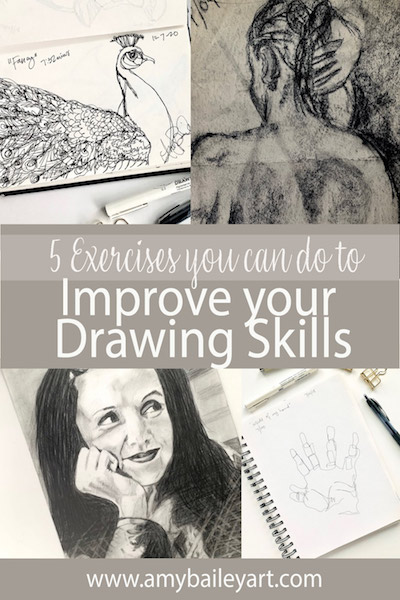Some people say that practice makes perfect, but when it comes to drawing I like to say that the right kind of practice makes you better. When it comes to drawing consistent practice is the only way to get better. These exercises are the right kind of practice. They will train your eye to see and improve your hand eye coordination which is how you improve your drawing skills.
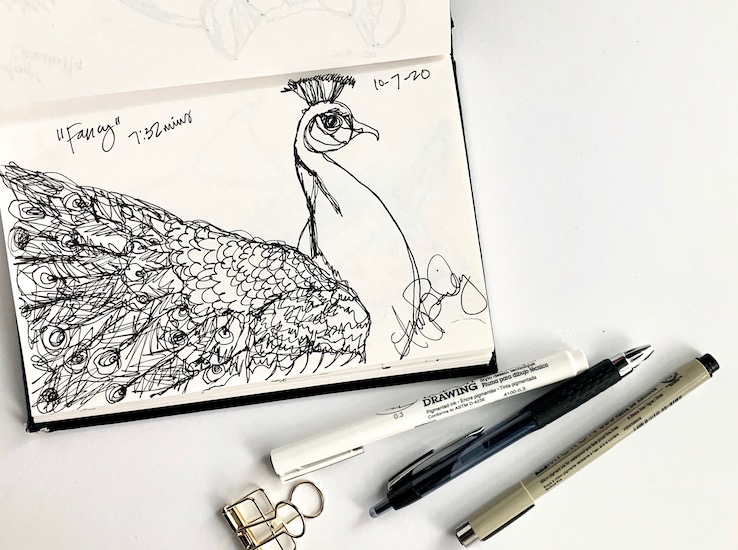
Some might call these “Beginner Drawing Exercises”, but these are exercises I still do as often as I can. I like to call them “Essential Drawing Exercises”. Learning these mechanics of drawing will serve you well in every other medium or artistic endeavor you undertake.

So, said differently, improve your drawing skills to improve all your artistic skills!
Let’s dive in!
1. Blind Contour Line Drawing
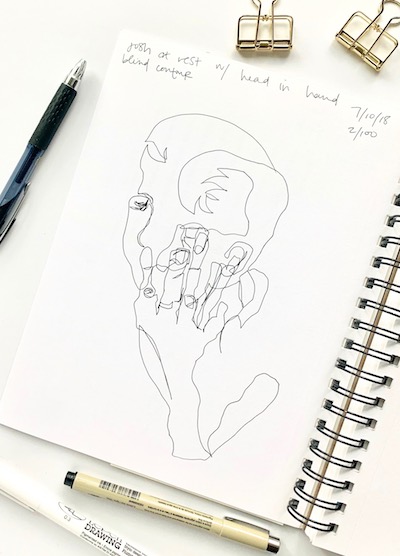
Blind contour line drawing is drawing the outline of an object without picking up your pen or pencil or looking at your paper. This is difficult and rarely turns out looking like the actual object. If you practice this often, you will get better and better at not looking and improve the communication between your hand and brain so that when you are doing observation drawings or any kind of drawing you are able to look more at what you are drawing while only glancing down at your paper every so often. This is very helpful when drawing or painting to likeness whether with people, animals, landscapes or still life!
2. Continuous Contour Line Drawing
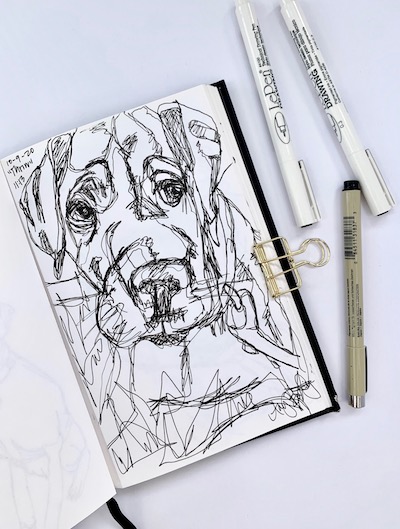
Continuous contour line drawing is just like blind contour line drawing, except you can look at your paper all you like. These are a great way to study the intricacies of your subject and understand the proportions you are working with. It helps your brain learn to break down subjects into basic shapes, lines and forms. It also increases hand eye coordination.
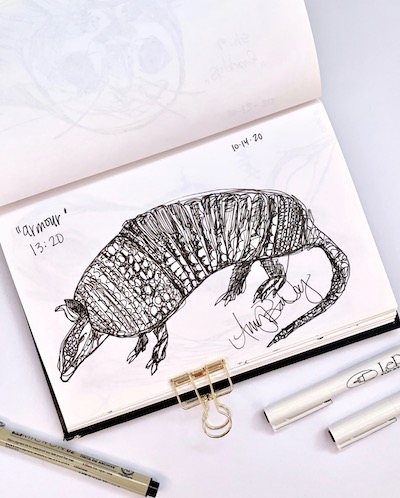
3. White on White Drawing
This practice helps develop your understanding of value, which is essential for creating life like forms. Value is the light or darkness of the subject or area you are drawing. It gives you an opportunity to play around with different shading techniques. Putting a white object on top of another white object with a light source forces you to draw the shadows and areas around the edges to create the form. It also forces you to rely heavily on highlights (whitest whites) in your drawing which creates more depth and value. You accomplish all these things without the distraction of translating colors.
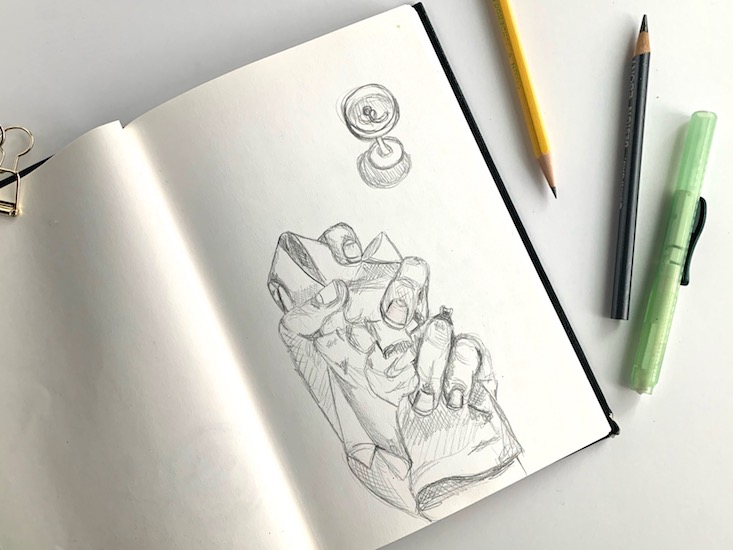
Some ideas for setting up a white on white drawing would be a white sheet pillowed for lots of folds and eggs on top. I used to pop popcorn for my students and put it on sheets of white paper. (I also gave them some for a snack.) Crumple up a sheet of white paper and draw it. Find any white objects you have around your house and set up a still life on a white sheet with a lamp for your light source.
4. Observation Drawing
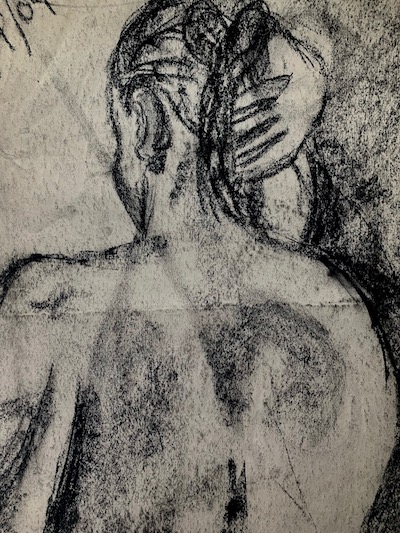
There are many ways to do observation drawing. Not to oversimplify, bucape, cityscape, your hand, people modeling or anything in front of you, training your hand to put down on paper what your eyes and brain understand is hard work. But, with practice it will get easier and easier.
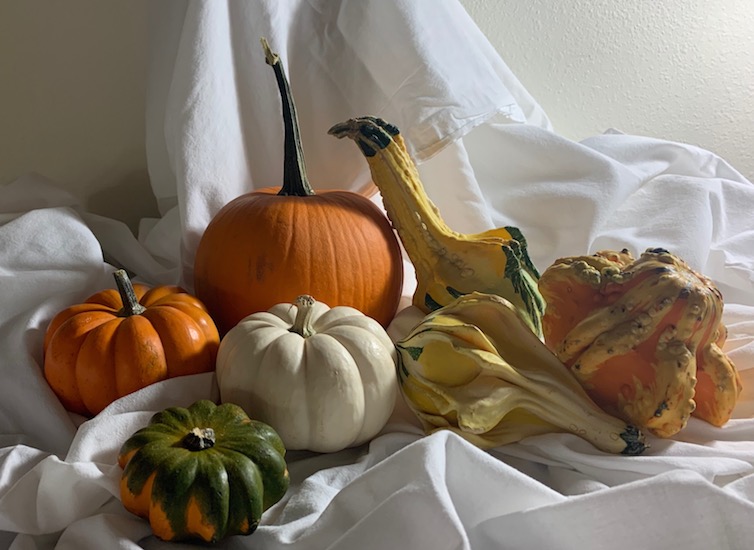
You do not have to be enrolled in art school to get good, high quality observation drawing practice. A few ideas are to go to a park and draw people there. Just try not to be too creepy about it or creepy at all really. It’s 2021, people. If you have kids, draw them while they play, draw your food. Like van Gogh, buy yourself some flowers and draw them. Go to the botanical gardens and draw the plants (they won’t judge you for staring). Grab some favorite glasses, bowls, pitcher and fruit and bring out your inner Cezanne. It doesn’t have to be fancy as you can see in the photo above. It’s a white sheet, and pumpkins and gourds that were in season. Using a lamp establishes a light source which creates amazing shadows and highlights.
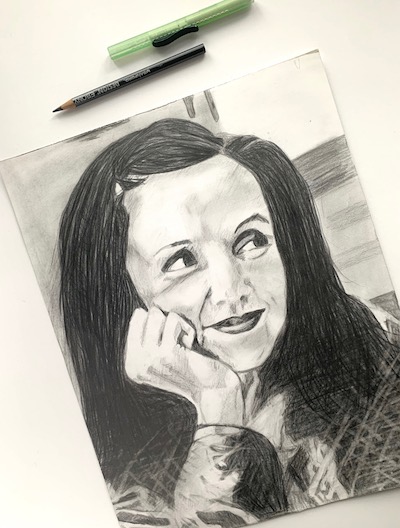
5. Draw from Photos
Drawing from photos lets you practice drawing anything. I love to practice drawing people from photos since outside of a life drawing class “sitting” for portraits isn’t really something we do any longer. I like to print off my own photos, tear out photos from magazines or ads and keep them in a sketchbook for when I have time to practice.
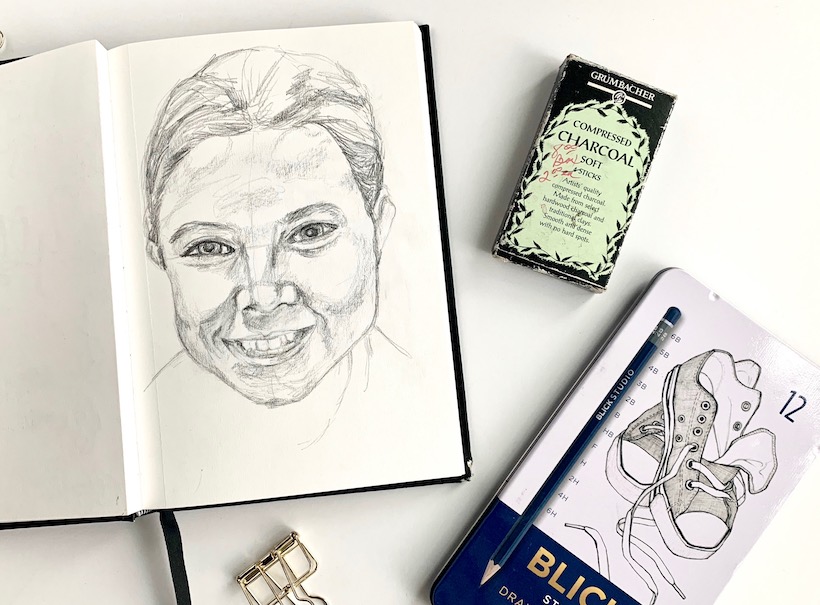
While there are many ways to improve your drawing skills these are my top 5 favorites!
- Blind Contour Line Drawing
- Continuous Contour Line Drawing
- White on White Drawing
- Observation Drawing
- Drawing from Photos
I hope these help you in your quest to improve your drawing skills. I’m passionate about drawing because I know it will improve your skills in every other area. Learning to draw helps instill the basic building blocks to understanding elements and principles of art.
Please feel free to let me know what your favorite way to practice drawing are and what I’ve left out here that you feel is important!
